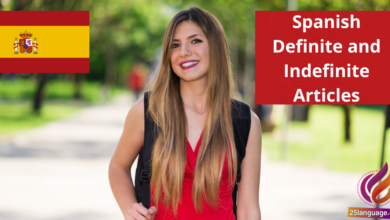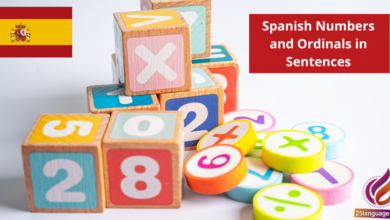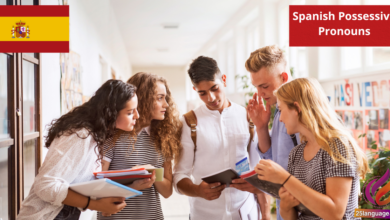Spanish Sentence Structure

Imagine expressing your thoughts clearly in Spanish, painting vivid pictures with your words! Understanding Spanish sentence structure is the key that unlocks this ability. In today’s lesson, we’ll explore how to arrange words effectively to convey meaning, just like in English but with some delightful twists. By mastering these structures, you’ll enhance your communication skills and gain confidence, making every conversation a vibrant exchange of ideas. Let’s dive in and transform your Spanish!
understanding the Foundations of Spanish Sentence Structure
To master Spanish sentence structure, it’s vital to grasp basic word order. Generally, the structure follows a Subject-Verb-Object (SVO) format, similar to English. Such as, in the sentence Yo como manzanas (I eat apples), “Yo” is the subject, “como” is the verb, and “manzanas” is the object. Spanish sentences can also adopt different structures for emphasis, such as placing the object at the beginning: Manzanas como yo (Apples I eat), but these constructions are less common in everyday speech. Key points to remember include:
- Subject typically comes first.
- Verb follows subject immediately.
- Object can come last,but can be rearranged for emphasis.
Another significant aspect of Spanish sentences is the agreement between subjects and verbs in number and person. For example, consider the sentences ella habla español (She speaks Spanish) and Ellos hablan español (Thay speak Spanish). Here, “habla” is used with the singular subject “Ella”, while “hablan” is used with the plural subject “Ellos”.Understanding these conjugations is essential to forming correct sentences.The following table highlights some examples of subject-verb agreement:
| Spanish Example | Grammar Rule | English Translation |
|---|---|---|
| yo como | First person singular | I eat |
| Tú comes | Second person singular | You eat |
| Él/Ella come | Third person singular | He/She eats |
| Nosotros comemos | First person plural | we eat |
| Ustedes comen | Second person plural | You (plural) eat |
| Ellos/Ellas comen | Third person plural | They eat |
Crafting Clear and Concise Sentences in spanish
When ,it’s essential to understand the subject-verb-object (SVO) structure,which is similar to English. Start with a clear subject, follow with the verb, and conclude with the object. Unlike English,adjectives generally follow the nouns they describe,which can affect sentence clarity if not attended to. as an example:
- La casa roja es bonita. (The red house is beautiful.)
- Ella come manzanas. (She eats apples.)
In these examples, the straightforward structure helps convey the message clearly. Another key point is verb conjugation, which changes based on the subject. Keeping verbs properly conjugated ensures your sentence remains clear and makes it easy for the listener or reader to follow. Here are a few conjugations in present tense:
| Subject | Verb (hablar – to speak) | Example Sentence | Translation |
|---|---|---|---|
| Yo | hablo | Yo hablo español. | I speak Spanish. |
| Tú | hablas | Tú hablas inglés. | You speak English. |
| Él/Ella | habla | Él habla francés. | He speaks French. |
Using the correct subject and verb forms helps in crafting sentences that are not just clear but also grammatically correct. Always consider the audience and keep sentences as simple as possible, avoiding unnecessary complexity that might confuse english-speaking learners. By focusing on simple structures and employing the right conjugations, you will effectively convey your message in Spanish.
Common Structures and Their Variations in Spanish
In Spanish, the structure of sentences often follows a different order compared to English, which can be intriguing for learners. The standard sentence structure in Spanish is Subject-Verb-object (SVO), similar to English, but Spanish allows for more flexibility due to its inflectional nature. The subject can often be omitted if it is clear from the verb conjugation. For example: Yo como manzanas. (I eat apples) can be simply stated as Como manzanas. (I eat apples). Additionally, adjectives in Spanish typically follow the nouns they describe, which is a key difference: El coche rojo means The red car, where the adjective ‘rojo’ comes after the noun ‘coche’.
Another common structure involves the use of reflexive verbs, which are essential for indicating actions that people do to themselves. These verbs use reflexive pronouns that correspond to the subject. For instance, Me lavo las manos translates to I wash my hands, where me indicates that the action is performed by the subject on themselves.In addition, Spanish frequently employs direct and indirect object pronouns, providing an efficient way to express ideas without repetition. An example is: Te doy el libro, meaning I give you the book, where te is the indirect object pronoun indicating ‘to you.’
| Spanish Example | Structure/Rule | English Translation |
|---|---|---|
| Yo como manzanas. | Subject-Verb-Object (SVO) | I eat apples. |
| El coche rojo. | Noun-Adjective Order | The red car. |
| Me lavo las manos. | Reflexive Verb Structure | I wash my hands. |
| Te doy el libro. | Indirect Object Pronoun Usage | I give you the book. |
Practical Tips for Mastering Spanish Sentence Formation
Understanding the structure of Spanish sentences is crucial for effective communication. In Spanish, the basic sentence structure follows the subject-Verb-Object (SVO) order, similar to English. However, Spanish provides more flexibility in sentence formation due to its inflectional nature.Here are some essential points to consider:
- Subject Pronouns: Typically precede the verb, e.g., “Yo como” (I eat).
- Verb Conjugation: Verbs change endings based on the subject, like “tú hablas” (you speak) vs.”ellos hablan” (they speak).
- Object Placement: Direct and indirect objects can either precede or follow the verb.As a notable example, “lo veo” (I see him) or “Veo a Juan” (I see Juan).
Moreover,it’s essential to understand the use of adjectives,which usually follow the nouns they describe. For example, “la casa blanca” (the white house) reflects that “blanca” (white) comes after “casa” (house). Additionally, certain phrases require prepositions. Here’s a brief table summarizing these aspects:
| Spanish Example | Rule | English Translation |
|---|---|---|
| Yo estudio español. | Subject-verb-Object structure. | I study Spanish. |
| El perro come comida. | Adjective (comida) follows the verb (come). | The dog eats food. |
| Voy a la playa. | Use of preposition (a) indicating direction. | I’m going to the beach. |
Insights and Conclusions
Conclusión de la Lección: Estructura de las Oraciones en Español
Hoy hemos explorado la fascinante y fundamental estructura de las oraciones en español. Hemos aprendido que, a diferencia del inglés, el español tiene una mayor flexibilidad en el orden de las palabras, pero siempre sigue ciertos principios básicos que ayudan a mantener la claridad y el significado. Hicimos hincapié en la importancia de identificar el sujeto, el verbo y el objeto, así como en cómo los adjetivos pueden cambiar de posición para enriquecer nuestras oraciones.
Recuerda que cada frase que construyas es una oportunidad para expresarte con creatividad y precisión. Ahora que comprendes cómo funciona la estructura de las oraciones en español, te animo a que practiques lo aprendido.intenta formar oraciones sencillas y luego complica un poco más tus frases añadiendo detalles. La práctica frecuente te ayudará a internalizar estas reglas y a sentirte más seguro al comunicarte en español.
No te desanimes si al principio cometes errores; forman parte del proceso de aprendizaje. Lo más importante es seguir intentando y no tener miedo de hacer preguntas. Cada paso que das te acerca más a la fluidez. ¡Sigue practicando y verás cómo tu habilidad en el español crece y florece!
¡Mucho ánimo y hasta la próxima lección!





























